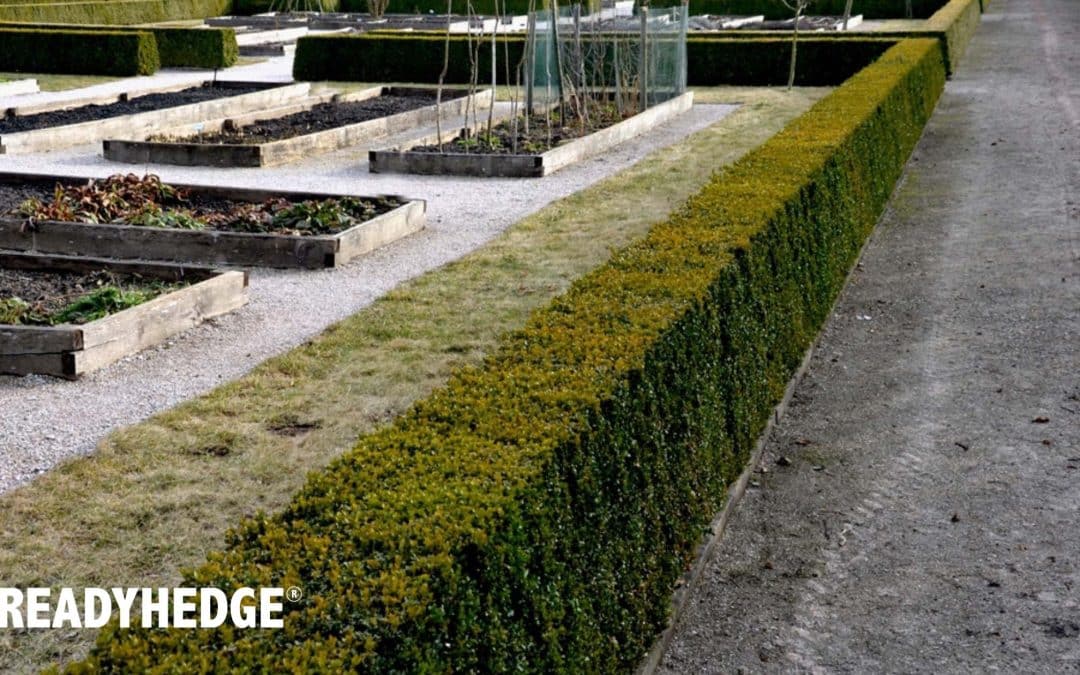
by Matthew Kemble | Jan 24, 2024 | News
The Versatile World of Low Hedging: Ideas for Every Gardener
Low hedging, an integral component of garden design, offers a unique blend of aesthetics, functionality, and versatility. Perfect for gardeners of all skill levels, low hedges provide a natural solution for defining spaces, enhancing privacy, and adding beauty to landscapes. This blog explores the multifaced world of low hedging, offering ideas and insights to inspire gardeners everywhere.
Understanding Low Hedging:
Low hedges, typically under one metre in height, are much more than just garden borders. They serve multiple purposes: Creating visual interest, delineating spaces, and even serving as windbreaks or noise barriers. The beauty of low hedging lies in its versatility – whether you have a sprawling large garden or a modest front garden, there’s a low hedge to suit your needs.
Choosing the Right Plants:
The key to successful low hedging starts with appropriate plants. Factors such as growth rate, foliage density, and adaptability to your local climate are crucial. Some popular choices include:
• Box (Buxus sempervirens): Known for its dense, evergreen foliage, boxwood is a classic choice for formal low hedging.
• Japanese Holly (Ilex Crenata): A great alternative to boxwood, it’s perfect for creating smooth, rounded hedges.
Designing with Low Hedges
Low hedging offers endless design possibilities, making them suitable for a range of different garden styles:
1. Formal Gardens: Use straight-lined low hedging to create geometric patterns or frame garden statues.
2. Cottage Gardens: Combine flowering plants like lavender with informal hedging for a relaxed, charming effect.
3. Contemporary Spaces: Opt for neatly trimmed hedges like boxwood to complement modern garden designs.
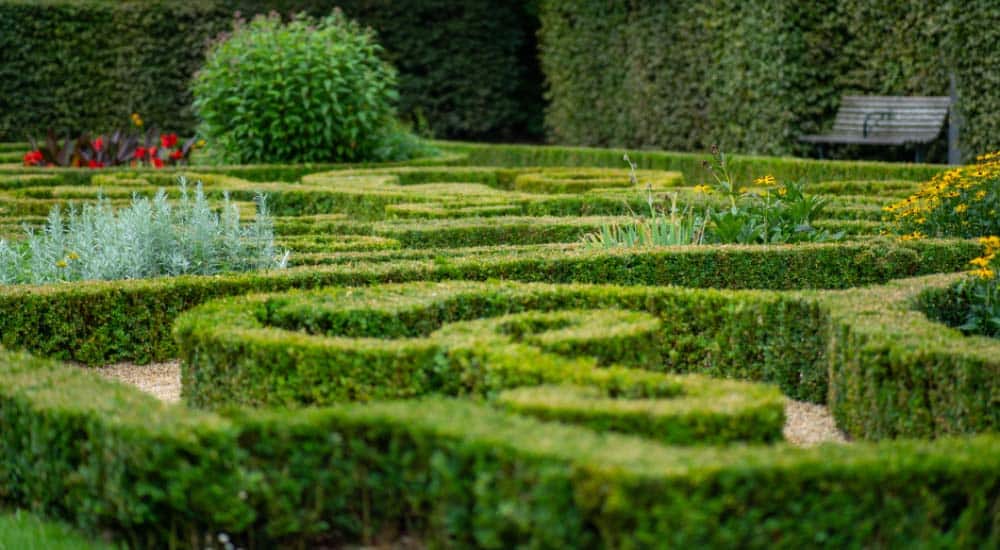
Maintenance Tips:
While low hedges are generally low-maintenance, some care is necessary to keep them looking their best:
• Pruning: Regular pruning not only maintains the desired shape but also encourages dense growth.
• Feeding and Watering: Providing the right nutrients and adequate water will ensure your hedges stay healthy and vibrant.
• Pest and Disease Management: Keep an eye out for common issues like box blight or spider mites and caterpillars and treat them promptly.
Incorporating Low Hedges for Functionality:
Apart from their decorative value, low hedges can be functional:
• Creating Borders: They are ideal for marking the boundaries of vegetable gardens or walkways.
• Wildlife Habitats: Planting native hedges can attract beneficial insects and birds, enhancing your garden’s biodiversity.
Sustainable Gardening with Low Hedges:
Incorporating sustainable practices into your hedging strategy not only benefits the environment but also improves your gardens health:
• Choosing Native Plants: They are better adapted to local conditions and require less care.
• Organic Practices: Use natural fertilisers and pest control methods to minimise environmental impact.
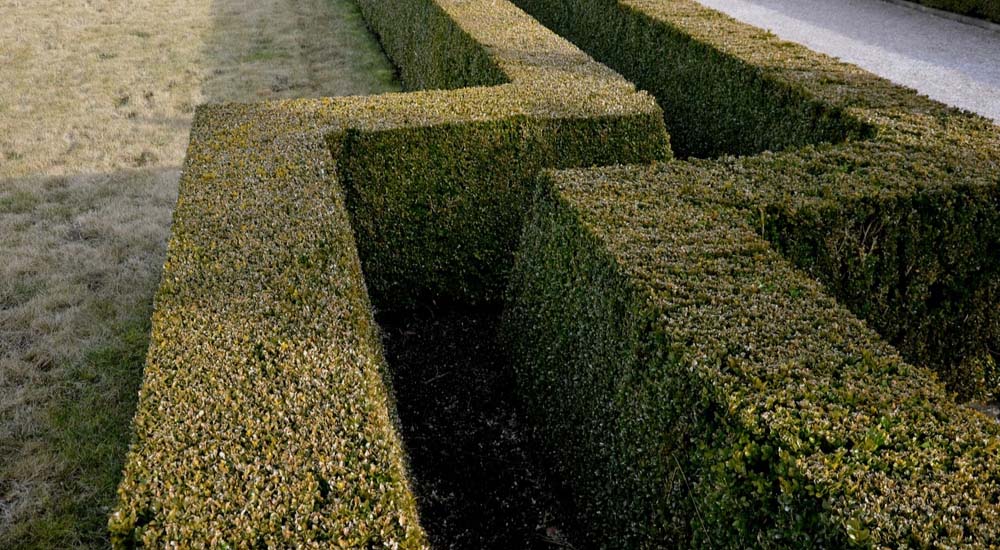
Advanced Techniques:
For the more adventurous gardener, low hedging can be an opportunity to experiment:
• Topiary Art: Skilful pruning hedges into artistic shapes can add a unique touch to your garden.
• Layered Planting: Combining different hedge heights can create a visually appealing and dynamic landscape.
Integrating Low Hedges in Small Spaces and Urban Gardens:
Low hedges are not just for expansive landscapes; they can play a significant role in smaller gardens and urban settings. In compact spaces, low hedges can be used to maximise the sense of space and create distinct areas without overwhelming the area. They are excellent for balcony gardens, patio borders, or green dividers in communal urban spaces. By choosing dwarf varieties or slow-growing plants, urban gardeners can enjoy the elegance of hedges without the need for frequent trimming or maintenance.
The world of low hedging is rich and varied, offering something for every gardener. Whether you’re a seasoned pro or just embarking on your garden journey, low hedging can enhance your garden in a number of ways. From creating defined spaces to attracting wildlife, these versatile plants are a fantastic addition to any garden.
By embracing the ideas shared within this blog, you’re well on your way to discovering the full potential of low hedging in your garden. Remember, gardening is a journey of learning and growth, and low hedging is a wonderful chapter in that adventure.
For more hedging insights and expert advice, please feel free to get in touch with us here at Readyhedge. Our team is dedicated to helping you achieve your gardening/landscaping goals.
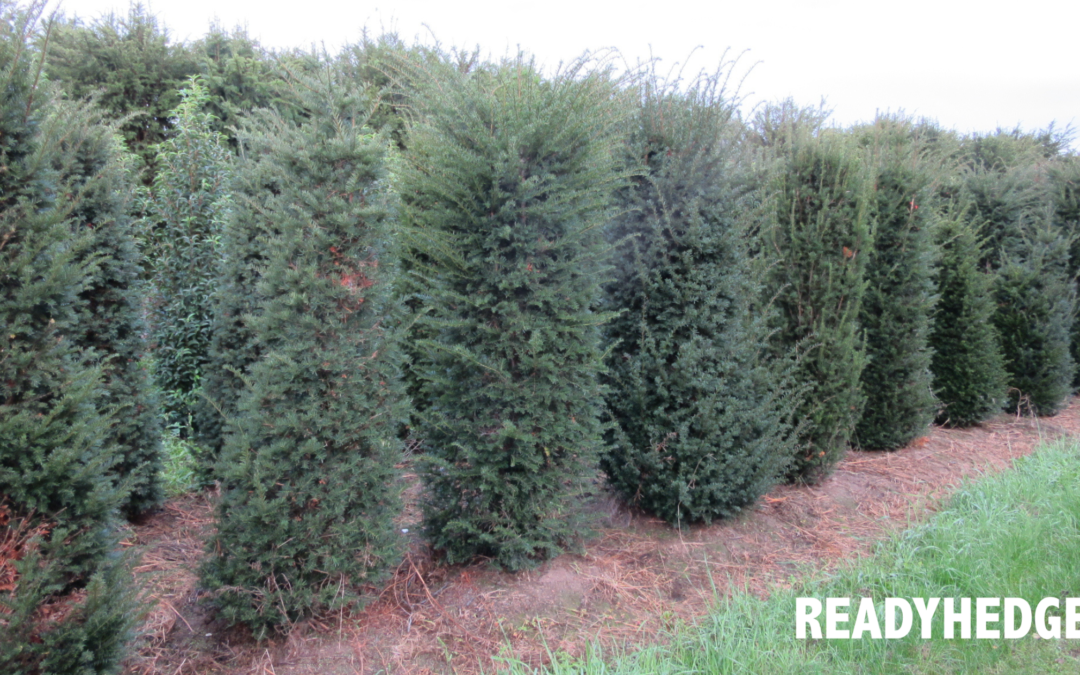
by Matthew Kemble | Dec 12, 2023 | News
Unveiling the Charm of Taxus Hedging in Your Garden
Discover the timeless elegance of Taxus hedging, commonly known as Yew, a distinguished choice for garden enthusiasts. This blog delves into what Taxus is, its benefits, diverse applications in various garden spaces, and essential planting and maintenance tips. Known for its dense, evergreen foliage, Taxus is a popular choice in landscape design, offering both aesthetic appeal and functional benefits.
Benefits of Taxus Hedging
1. Aesthetic Appeal: Taxus hedges offer lush, green backdrops year-round, enhancing garden and landscape aesthetics.
2. Privacy and Noise Reduction: Their dense foliage creates natural privacy screens and sound barriers, ideal for urban settings.
3. Environmental Benefits: Taxus hedges contribute to carbon sequestration and provide habitats for wildlife, these hedges attract a variety of birds and beneficial insects, promoting biodiversity and enriching the garden ecosystem.
4. Versatility in Design: Suitable for both formal and informal designs, they can also be sculpted into various shapes, catering for a multitude of landscape themes.
5. Durability and Low Maintenance: These hedges are resilient to various weather conditions and require minimal upkeep, making them a practical choice for gardeners of all skill levels. If taken care of to a high standard, these hedges could increase the monetary value of your garden.
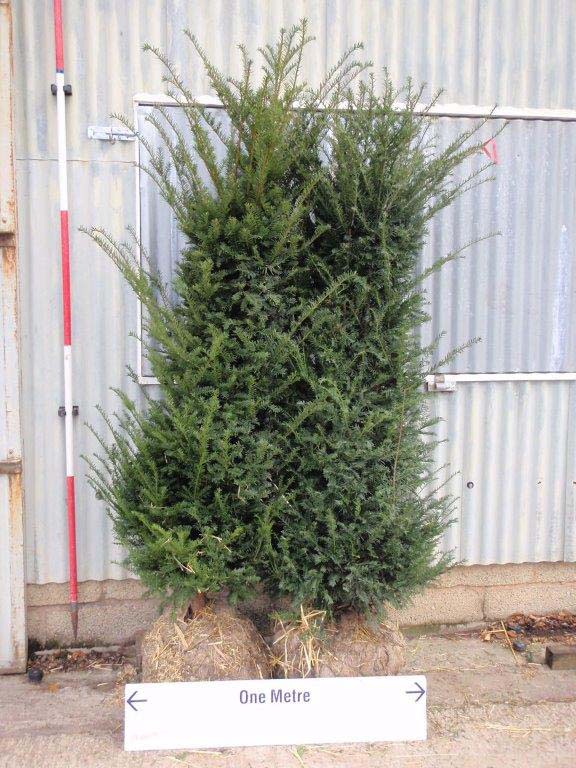
Utilisation in Different Areas
Taxus hedges are versatile, fitting seamlessly into various garden designs. They’re perfect for creating boundary hedges, ornamental topiaries, or as foundational plants in mixed borders. In larger landscapes, they serve as windbreaks or privacy screens. Taxus hedges also find their place in smaller urban gardens, providing greenery and tranquillity amidst bustling cityscapes.
Planting and Maintenance
To ensure the success of your Taxus hedge, consider these tips:
• Planting: Choose well-drained soil and a suitable location with adequate sunlight.
• Watering: Regular watering is important, especially during dry spells.
• Trimming: trim 2 to 3 times per year to help maintain shape and encourages dense growth.
• Disease Management: Watch for signs of root rot or pest infestations and treat promptly.
Taxus hedging is more than just a garden feature; it’s an investment in beauty, privacy, and environmental health. Whether you’re creating a serene garden retreat or enhancing an urban area, Taxus hedges offer a blend of elegance and practicality. Embrace the versatility and benefits of Taxus in your garden for a lasting impact.
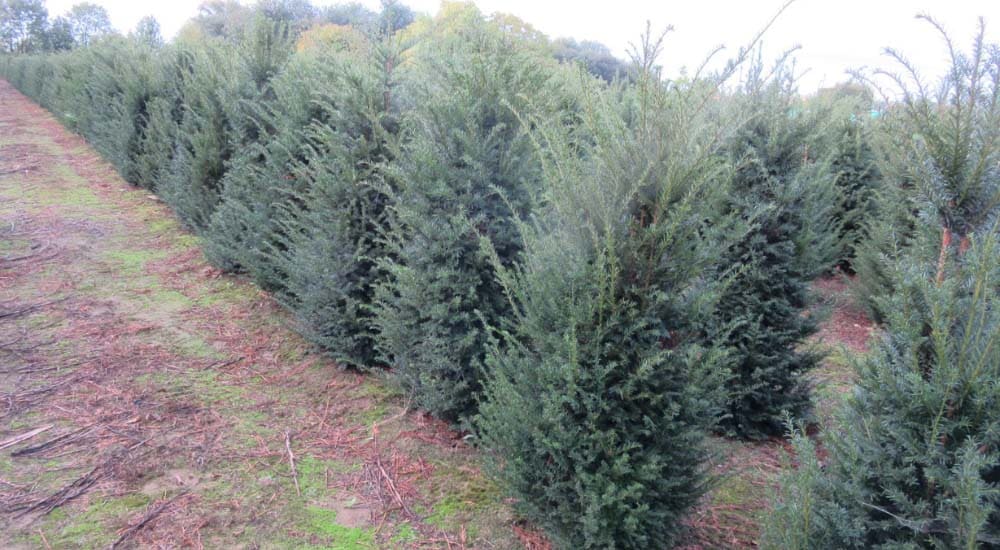
How to buy Taxus Hedging?
Taxus hedging can be bought at this time of the year (and up until the end of March) as Rootballed or Field Grown plants. Rootballed Taxus hedging involves transplanting Taxus, with a substantial soil ball encompassing its root system. This soil ball is then wrapped in a hessian bag which can then also have wire around it depending on the size of the ball. This traditional technique ensures minimal root disturbance, facilitating a smoother transition and healthier growth post transplantation. When planting the wire and hessian are left on the rootball, but are untied from around the stem of the plant, and they will rot away over the course of a couple of years.
The main advantage of buying taxus this way is that you can get bigger and bushier plants than you would from container grown plants.
Contact us today to see what we have to enhance your planting scheme.
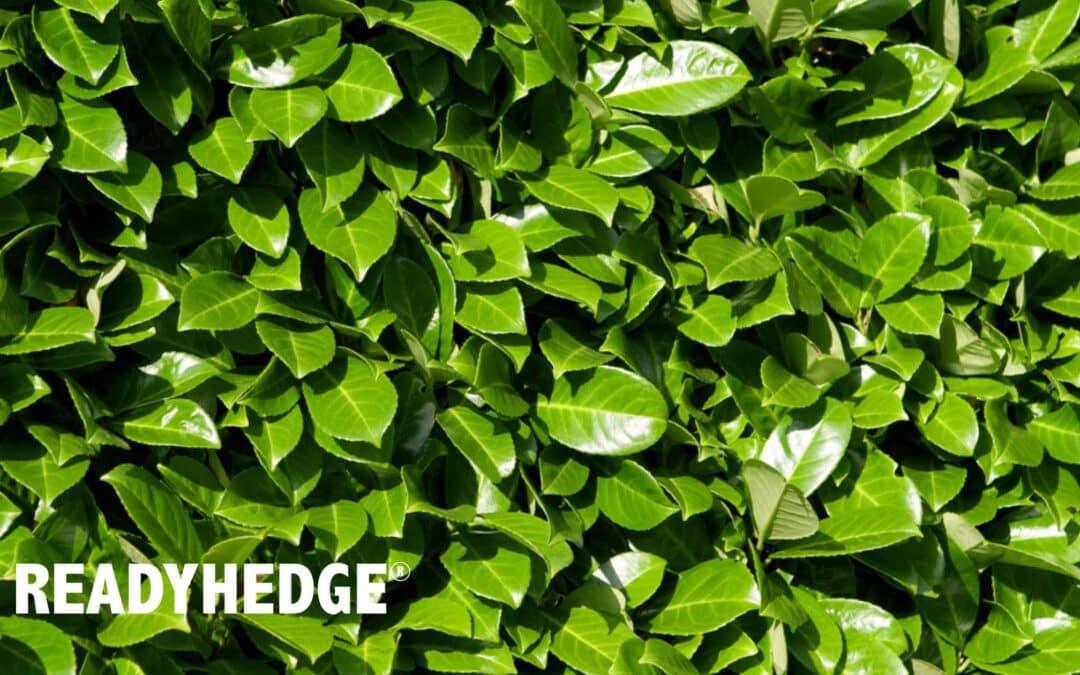
by Matthew Kemble | Dec 8, 2023 | News
Welcome to the vibrant world of gardening, where the charm of evergreen hedges meets the practicality of fast growth! In this article, we’re going to explore the Top 15 Fast Growing Evergreen Hedging Plants in the UK, a selection tailored for those who love to see their gardens flourish quickly and beautifully. Whether you’re a seasoned gardener or just starting out, these plants are a perfect blend of functionality and aesthetics. From providing year-round privacy to enhancing the greenery of your space, these evergreen hedges are the unsung heroes of the garden. So, grab your gardening gloves as we delve into a world of lush, fast-growing hedges that promise to transform your garden into a living masterpiece, all while thriving in the unique UK climate.
What Makes a Good Evergreen Hedge?
Imagine a hedge that’s not only a privacy screen but a living work of art. That’s what a good evergreen hedge brings to your garden. These plants are the stalwarts of the garden, standing strong through all seasons. The best part? Fast-growing varieties mean you don’t have to wait ages to see your green dreams come to life!
Benefits of Evergreen Hedging in the UK
Beyond their beauty, evergreen hedges are a powerhouse of benefits. They’re like nature’s own air purifiers, absorbing pollution and exhaling fresh air. They provide a cozy shelter for birds and beneficial insects. And let’s not forget the privacy and wind protection they offer, making your garden a serene sanctuary.
Top 15 Fast Growing Evergreen Hedging Plants in the UK
|
Plant
|
Soil Type |
Climate |
Sunlight
|
|
Cherry Laurel
|
Well-drained |
Temperate |
Full sun to shade |
|
Leyland Cypress
|
Loamy |
Maritime |
Full sun
|
|
Boxwood
|
Sandy |
Continental |
Partial sun to sun |
| Holly |
Moist, well-drained |
Temperate |
Full sun to shade
|
|
Privet
|
Loamy |
Maritime |
Full sun to shade |
|
Laurel
|
Well-drained |
Continental |
Partial sun to sun
|
| Yew |
Well-drained |
Temperate |
Partial sun to sun
|
|
Escallonia
|
Loamy |
Maritime |
Full sun to partial sun |
| Portuguese Laurel |
Well-drained |
Continental |
Full sun to shade
|
|
Griselinia
|
Loamy |
Maritime |
Full sun to partial sun |
| Photinia |
Well-drained |
Temperate |
Full sun to partial sun
|
|
Berberis
|
Sandy |
Continental |
Full sun to partial sun |
| Bamboo |
Well-drained |
Maritime |
Full sun to partial sun
|
|
Osmanthus
|
Loamy |
Temperate |
Partial sun to sun
|
| Escallonia |
Well-drained |
Maritime |
Full sun to partial sun
|
Plant 1: Cherry Laurel (Prunus laurocerasus)
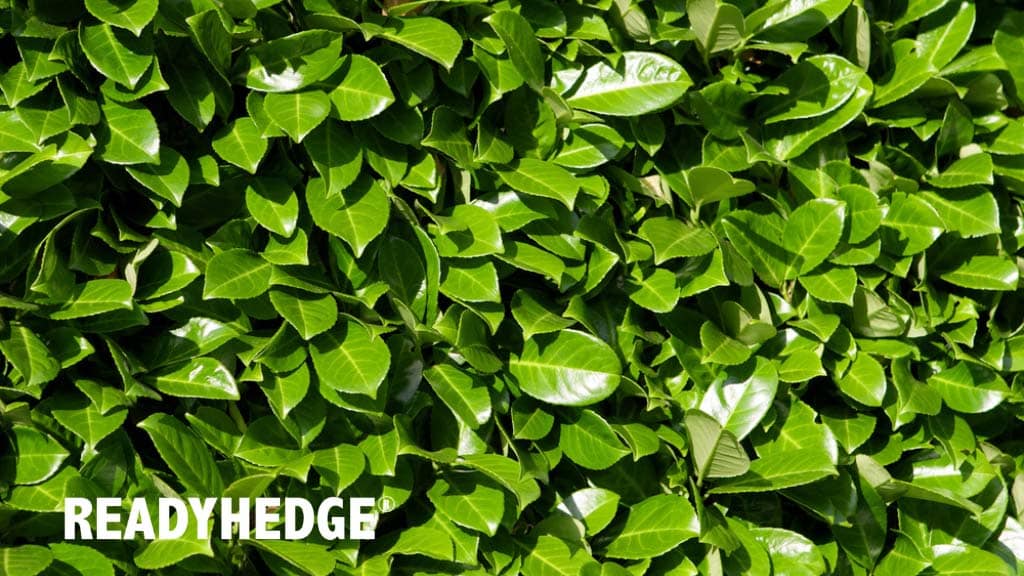
Description: Cherry Laurel is a versatile and popular choice among gardeners in the UK. With its glossy, dark green leaves and fragrant white flowers, it adds an elegant touch to any garden. It’s known for its dense growth, making it an excellent option for creating privacy and wind protection.
Growth Rate: Cherry Laurel is a fast grower, capable of adding up to 24 inches of new growth each year. It can reach a maximum height of 20 feet, creating a substantial hedge relatively quickly.
Ideal Growing Conditions: This adaptable plant thrives in well-drained soil and can tolerate a wide range of sunlight conditions, from full sun to partial shade. It’s well-suited to the varying climates of the UK.
Benefits as a Hedge: Cherry Laurel is an excellent choice for privacy hedges, thanks to its dense foliage. It also provides effective wind protection, making it ideal for coastal regions. Its evergreen nature ensures your garden remains vibrant year-round.
Considerations: While Cherry Laurel is a fantastic hedge plant, it may require regular pruning to maintain its shape and size. Additionally, it’s essential to note that all parts of this plant are toxic if ingested, so exercise caution if you have pets or small children.
Plant 2: Leyland Cypress (x Cupressocyparis leylandii)
Description: Leyland Cypress is a popular choice for gardeners seeking rapid growth and a tall, dense hedge. It features feathery, dark green foliage that creates a lush backdrop in any garden setting.
Growth Rate: If you’re looking for quick results, Leyland Cypress won’t disappoint. It can grow at a remarkable rate of up to 36 inches per year, and in ideal conditions, it can reach an impressive height of 60 feet.
Ideal Growing Conditions: This conifer prefers loamy soil and thrives in full sun. Its tolerance to different soil types makes it a versatile option for many gardens in the UK.
Benefits as a Hedge: Leyland Cypress’s rapid growth makes it an excellent choice for those who want fast coverage and a natural windbreak. Its dense foliage provides privacy and serves as an effective sound barrier.
Considerations: To keep Leyland Cypress in check and prevent overgrowth, regular pruning is essential. Without proper maintenance, it can become unwieldy. However, with proper care, it can be a magnificent addition to your garden.
Plant 3: Boxwood (Buxus sempervirens)
Description: Boxwood is known for its small, dense leaves and its ability to be sculpted into various forms. It adds an elegant and timeless touch to formal gardens and landscapes.
Growth Rate: Boxwood grows at a moderate pace, typically adding around 6 inches of new growth per year. It reaches a maximum height of about 15 feet, making it suitable for various hedge heights.
Ideal Growing Conditions: Sandy soil is preferred for Boxwood, and it can thrive in both partial sun and full sun, making it versatile for different garden settings.
Benefits as a Hedge: Boxwood’s compact growth and evergreen foliage make it a classic choice for formal hedges. Its ability to be pruned into various shapes and sizes allows for creative landscaping.
Considerations: While Boxwood is an attractive option, it does require regular pruning to maintain its desired shape and prevent overgrowth. Additionally, it can be susceptible to some pests and diseases, so keep an eye out for any signs of trouble.
Plant 4: Holly (Ilex aquifolium)
Description: Holly is a classic evergreen plant known for its spiky, glossy green leaves and bright red berries. It adds a touch of traditional charm to any garden.
Growth Rate: Holly grows steadily, adding about 6 inches of new growth per year. It can reach a height of up to 40 feet when left to grow freely.
Ideal Growing Conditions: This plant prefers moist, well-drained soil and can thrive in both full sun and shade, making it versatile for different garden environments.
Benefits as a Hedge: Holly’s dense growth and spiky foliage create an effective privacy barrier. Its attractive red berries add color and interest during the winter months.
Considerations: While Holly is relatively low-maintenance, it may require occasional pruning to shape and control its size. Be cautious with the spiky leaves, especially if you have children or pets.
Plant 5: Privet (Ligustrum)
Description: Privet is a popular choice for hedging due to its small, dark green leaves and fast growth. It forms a dense and tidy hedge.
Growth Rate: Privet is a rapid grower, adding up to 24 inches of new growth each year. It can reach a height of 15 feet when left untrimmed.
Ideal Growing Conditions: This plant thrives in loamy soil and can adapt to full sun to partial shade conditions, making it suitable for various garden settings.
Benefits as a Hedge: Privet’s fast growth and dense foliage make it an excellent choice for creating privacy and boundaries. It can be easily pruned into different shapes.
Considerations: Regular pruning is essential to keep Privet in check and maintain its shape. It’s generally a hardy and easy-to-care-for option.
Plant 6: Laurel (Prunus laurocerasus)
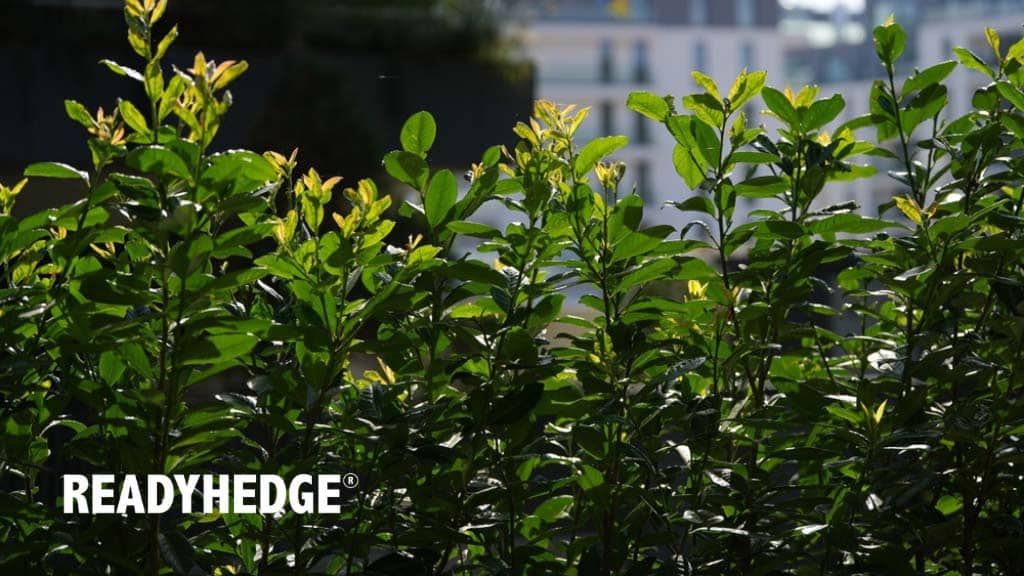
Description: Laurel, also known as Cherry Laurel, features glossy, dark green leaves and a bushy growth habit. It’s a versatile and attractive evergreen plant.
Growth Rate: Laurel grows at a moderate rate, adding about 12 inches of new growth per year. It can reach a maximum height of around 20 feet.
Ideal Growing Conditions: Well-drained soil is ideal for Laurel, and it thrives in partial sun to full sun conditions, adapting well to different lighting.
Benefits as a Hedge: Laurel provides excellent privacy and serves as a beautiful backdrop in your garden. It’s known for its lush and vibrant appearance.
Considerations: Regular pruning may be necessary to maintain the desired shape and size. It’s a low-maintenance option for evergreen hedges.
Plant 7: Yew (Taxus baccata)
Description: Yew is a slow-growing evergreen with dark green foliage and red berries. It’s a long-lived and elegant choice for hedging.
Growth Rate: Yew grows at a modest pace, adding around 6 inches of new growth per year. It can eventually reach a height of up to 60 feet.
Ideal Growing Conditions: Well-drained soil is preferred for Yew, and it thrives in partial sun to full sun conditions, adapting well to different lighting.
Benefits as a Hedge: Yew’s longevity and graceful appearance make it a timeless choice for formal hedges. It’s also deer-resistant, adding to its appeal.
Considerations: Yew requires minimal pruning due to its slow growth, but it’s essential to shape it as needed. Be cautious, as the plant’s seeds and leaves are toxic if ingested.
Plant 8: Escallonia (Escallonia spp.)
Description: Escallonia is a versatile evergreen shrub with small, vibrant green leaves and clusters of colorful flowers. It adds a touch of beauty to any garden.
Growth Rate: Escallonia grows steadily, adding about 12 inches of new growth per year. It typically reaches a height of 6 to 10 feet.
Ideal Growing Conditions: This plant prefers loamy soil and thrives in full sun to partial sun conditions, making it suitable for various garden environments.
Benefits as a Hedge: Escallonia’s vibrant flowers and dense growth create an attractive and colorful hedge. It also attracts pollinators like bees and butterflies.
Considerations: Regular pruning helps maintain the desired shape and size of Escallonia. It’s generally a low-maintenance and rewarding choice.
Plant 9: Portuguese Laurel (Prunus lusitanica)
Description: Portuguese Laurel, also known as Anise Laurel, features glossy green leaves and small fragrant flowers. It’s an elegant evergreen hedge plant.
Growth Rate: Portuguese Laurel grows at a moderate pace, adding about 8 to 12 inches of new growth per year. It can reach a height of up to 20 feet.
Ideal Growing Conditions: Well-drained soil is preferred, and it can thrive in both full sun and shade conditions, adapting well to different lighting.
Benefits as a Hedge: Portuguese Laurel provides an elegant and fragrant backdrop for your garden. It’s known for its versatility and attractive appearance.
Considerations: Regular pruning is recommended to shape and control the size of Portuguese Laurel. It’s generally a low-maintenance option.
Plant 10: Griselinia (Griselinia littoralis)
Description: Griselinia is a fast-growing evergreen shrub with bright green leaves. It’s known for its rapid growth and dense foliage.
Growth Rate: Griselinia is a fast grower, adding up to 24 inches of new growth each year. It can reach a maximum height of 10 to 15 feet.
Ideal Growing Conditions: This plant prefers loamy soil and thrives in full sun to partial sun conditions, making it adaptable to various garden environments.
Benefits as a Hedge: Griselinia’s fast growth and dense foliage make it an excellent choice for creating privacy and boundaries. It forms a lush and vibrant hedge.
Considerations: Regular pruning is essential to maintain the desired shape and size. Griselinia is generally easy to care for and can tolerate coastal conditions.
Plant 11: Photinia (Photinia spp.)
Description: Photinia is a versatile evergreen shrub known for its bright red new growth. It adds a splash of color to your garden.
Growth Rate: Photinia grows steadily, adding about 12 inches of new growth per year. It typically reaches a height of 10 to 15 feet.
Ideal Growing Conditions: Well-drained soil is ideal, and it thrives in full sun to partial sun conditions, allowing for adaptation to different lighting.
Benefits as a Hedge: Photinia’s colorful new growth adds interest and vibrancy to your garden. Its dense foliage also provides privacy.
Considerations: Regular pruning may be necessary to shape and control size. Photinia is generally easy to care for and responds well to pruning.
Plant 12: Berberis (Berberis spp.)
Description: Berberis, also known as
Barberry, is a thorny evergreen shrub with small green leaves and colorful berries. It adds a touch of intrigue to your garden.
Growth Rate: Berberis is a moderately fast grower, adding about 8 to 12 inches of new growth per year. It typically reaches a height of 6 to 10 feet.
Ideal Growing Conditions: Sandy soil is preferred, and it thrives in full sun to partial sun conditions, making it suitable for various garden environments.
Benefits as a Hedge: Berberis’s thorny nature makes it an effective deterrent for intruders. It also attracts birds with its colorful berries.
Considerations: Pruning is recommended to shape and control the size of Berberis. Be cautious of the thorns when handling the plant.
Plant 13: Bamboo (Bambusoideae)
Description: Bamboo is a unique evergreen plant known for its tall, slender stalks and lush foliage. It adds an exotic and tropical feel to your garden.
Growth Rate: Bamboo is a fast grower, with some varieties capable of adding up to 48 inches of new growth each year. Heights can vary significantly, with some reaching over 30 feet.
Ideal Growing Conditions: Well-drained soil is preferred, and bamboo thrives in full sun to partial sun conditions, allowing for adaptation to different lighting.
Benefits as a Hedge: Bamboo forms a dense and visually striking hedge that provides both privacy and an exotic ambiance to your garden.
Considerations: Bamboo can be invasive, so it’s crucial to plant it with containment measures in place. Regular pruning helps maintain its shape.
Plant 14: Osmanthus (Osmanthus spp.)
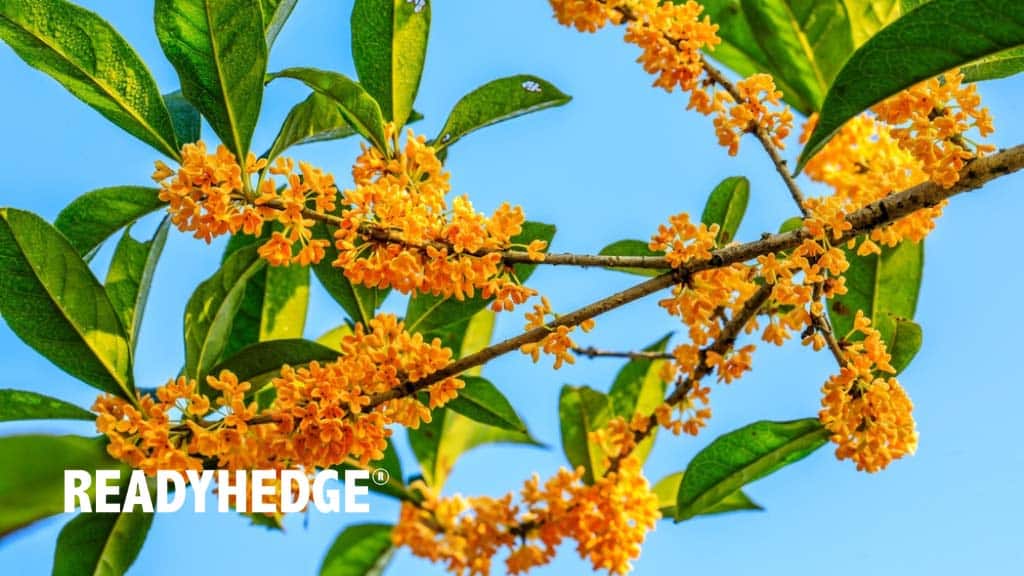
Description: Osmanthus is an elegant evergreen shrub with small, leathery leaves and fragrant flowers. It adds a touch of sophistication to your garden.
Growth Rate: Osmanthus grows steadily, adding about 6 to 8 inches of new growth per year. It typically reaches a height of 6 to 10 feet.
Ideal Growing Conditions: This plant prefers loamy soil and thrives in partial sun to full sun conditions, making it adaptable to various garden environments.
Benefits as a Hedge: Osmanthus’s fragrant flowers and dense growth create an attractive and aromatic hedge that adds charm to your garden.
Considerations: Regular pruning may be necessary to shape and control the size of Osmanthus. It’s generally a low-maintenance option.
Plant 15: Escallonia (Escallonia spp.) (Duplicate Entry)
Description: Escallonia is a versatile evergreen shrub with small, vibrant green leaves and clusters of colorful flowers. It adds a touch of beauty to any garden.
Growth Rate: Escallonia grows steadily, adding about 12 inches of new growth per year. It typically reaches a height of 6 to 10 feet.
Ideal Growing Conditions: This plant prefers loamy soil and thrives in full sun to partial sun conditions, making it suitable for various garden environments.
Benefits as a Hedge: Escallonia’s vibrant flowers and dense growth create an attractive and colorful hedge. It also attracts pollinators like bees and butterflies.
Considerations: Regular pruning helps maintain the desired shape and size of Escallonia. It’s generally a low-maintenance and rewarding choice.
These are the top 15 fast-growing evergreen hedging plants in the UK, each with its unique characteristics and benefits. Consider your garden’s specific needs and aesthetics when selecting the right plant for your hedge project.
Planting and Maintenance Tips for Evergreen Hedges
The journey from a tiny plant to a full-fledged hedge is an exciting one! Planting your evergreen hedge is just the beginning. It’s crucial to give them the right start – think well-draining soil, enough space to grow, and plenty of water in their early days. And remember, a little love and care go a long way in ensuring your hedges remain healthy and vibrant.
Common Problems and Solutions
Even the mightiest hedges face challenges. Common issues include pest infestations, diseases, and environmental stress. Regular checks and early intervention can save your hedge from serious damage. Don’t be afraid to seek advice from local gardening experts – they’re a treasure trove of solutions!
Design Ideas for Evergreen Hedging
Your hedge is your canvas, and the possibilities are endless. Evergreen hedges can be sculpted into formal shapes or left to grow more naturally for a relaxed look. Why not mix different types of hedges for a more dynamic and textured garden design?
Sustainability and Environmental Considerations
As gardeners, we have the opportunity to make a positive impact on the environment. Choosing plants that are native to the UK, conserving water, and avoiding harmful chemicals are just a few ways we can make our gardens eco-friendlier.
Conclusion
And there you have it – a journey through the enchanting world of the “Top 15 Fast Growing Evergreen Hedging Plants in the UK.” Each plant we’ve discussed brings its own unique beauty and benefits, making them ideal choices for creating a vibrant and lively garden boundary. Whether your priority is rapid growth, low maintenance, or year-round greenery, these evergreen hedges offer a solution for every gardening aspiration. We hope this guide has inspired you to bring some evergreen magic to your garden, creating a space that’s not only aesthetically pleasing but also a haven for wildlife and a testament to your green thumb. Happy gardening, and may your hedges grow tall, strong, and beautiful!
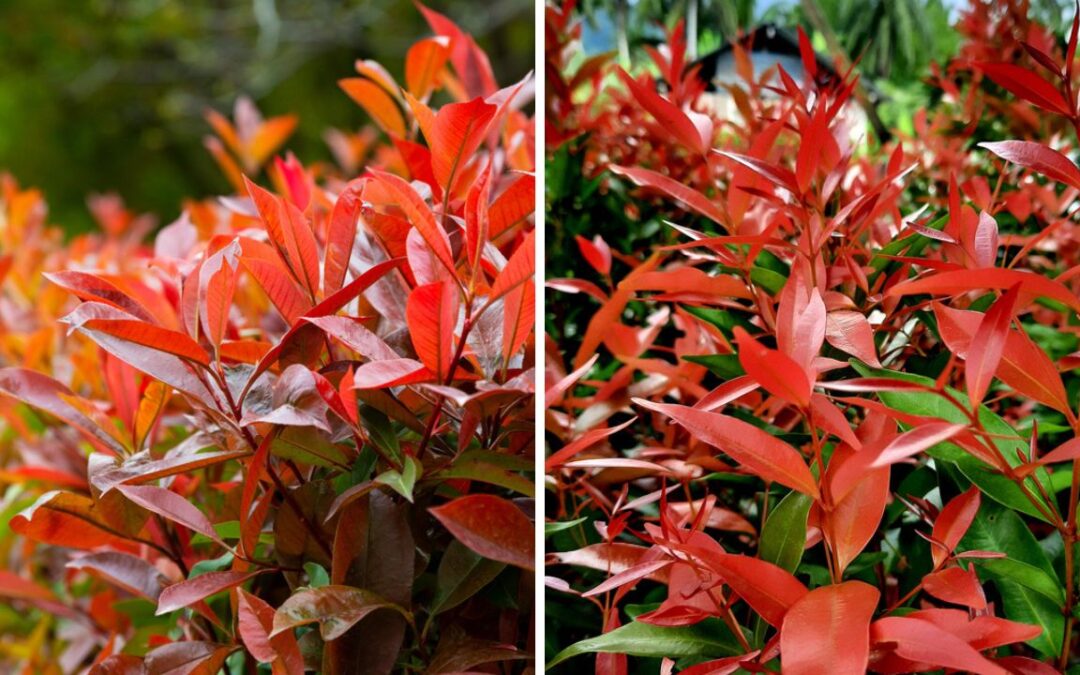
by Matthew Kemble | Oct 26, 2023 | News
In the intricate world of gardening, choosing the right plant can be both an art and a science. Among the myriad of choices, two standout contenders often captivate the attention of horticulturists and enthusiasts alike: Photinia Red Robin and Photinia Carre Rouge. As we delve into “Photinia Red Robin VS Photinia Carre Rouge: An In-depth Comparison,” we aim to provide a comprehensive analysis, shedding light on their unique attributes and differences. Whether you’re an expert botanist, a landscape architect, or simply an individual with a penchant for vibrant foliage, this comparison promises to offer valuable insights for your next gardening endeavor. Let’s embark on this enlightening exploration together.
Historical Background and Origin of Photinia Red Robin and Photinia Carre Rouge
The annals of gardening are replete with tales of plants that have woven themselves into the very fabric of our landscapes, and the Photinia family stands as a testament to this enduring legacy. For generations, these leafy wonders have held a cherished spot, adorning gardens with their vibrant charm. Yet, in recent times, the limelight has been particularly kind to two standout members: Photinia Red Robin and Photinia Carre Rouge.
Photinia Red Robin
Envision a classic painting that never fades with time; that’s Photinia Red Robin for you. With a history that spans several decades, this botanical gem has seen countless sunrises and sunsets, its striking red leaves dancing in the changing seasons. It’s this timeless allure, combined with its adaptability, that has endeared it to green thumbs everywhere, from the eager beginner planting their first shrub to the master gardener with soil-touched hands and years of wisdom.
Photinia Carre Rouge
Picture a starlet making a grand debut on the red carpet, turning heads and stealing the show. That’s the essence of Photinia Carre Rouge. Though it joined the garden scene more recently, its impact has been nothing short of sensational. With leaves that boast a profound shade of red and a growth pattern that’s compact yet commanding, it’s sparked passionate discussions and debates. The question on many lips: “Photinia carré rouge ou red robin?” As the intrigue around this plant grows, so does its legion of admirers.
| Attribute |
Photinia Red Robin |
Photinia Carre Rouge |
| Family Lineage |
Part of the long-standing Photinia family. |
A newer member of the Photinia family. |
| Historical Presence |
Has graced gardens for several decades. |
A more recent addition, yet impactful in its presence. |
| Primary Characteristics |
Known for its enduring red leaves and versatility in gardens. |
Recognized for its profound red hue and compact growth structure. |
| Popularity Over Time |
Consistently a favorite due to its timeless appeal. |
Rapidly gained attention, sparking debates like “photinia carré rouge ou red robin”. |
| Symbolism |
Represents timeless beauty and adaptability in landscaping. |
Symbolizes novelty, vibrancy, and modern gardening aesthetics. |
Together, these two plants represent a blend of time-honored tradition and refreshing novelty, each bringing its unique charisma to gardens worldwide. The dance of their leaves, swaying in harmony with nature’s rhythm, invites us all to stop, admire, and lose ourselves in their botanical ballet.
Key Characteristics of Photinia Red Robin
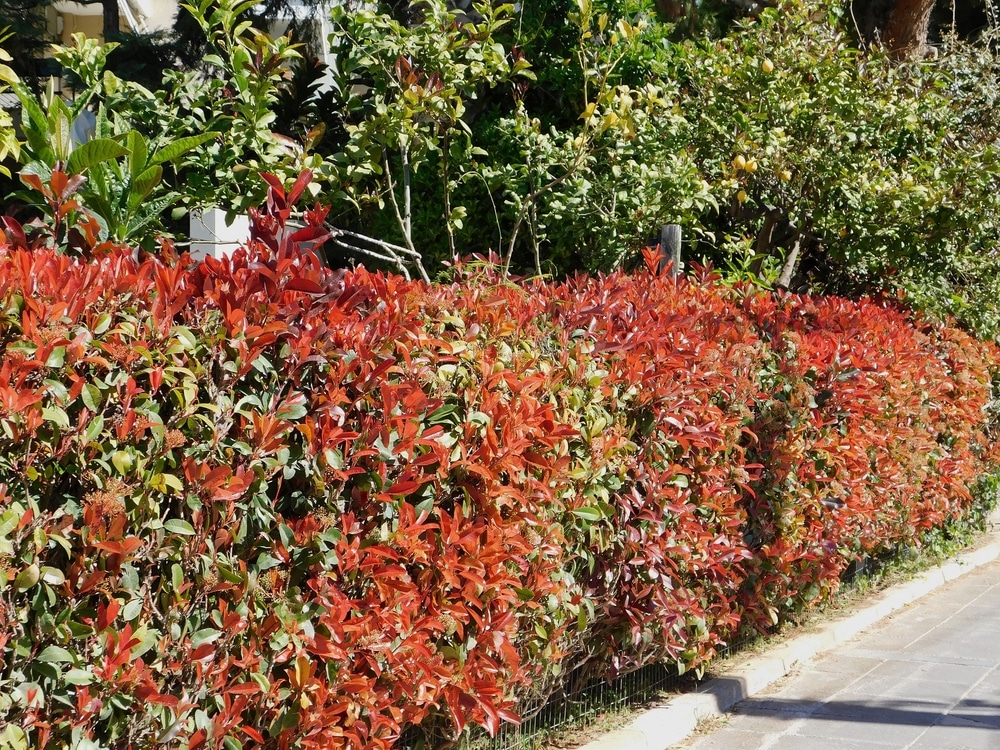
-
Physical Appearance and Growth Pattern
Picture a towering tree, standing proud and tall in the midst of a garden. That’s the essence of Photinia Red Robin. Growing to remarkable heights of 10-15 feet, it offers a lush, green canopy. Perfect for those seeking a touch of nature’s privacy, it provides a serene retreat right in your backyard.
The real magic of Photinia Red Robin lies in its leaves. Starting with a radiant red, they gracefully transition to a rich green as time passes. This ever-changing display of colors is a constant topic of discussion, especially when comparing photinia carre rouge vs red robin.
-
Flowering and Fruiting Habits
As the warmer months approach, Red Robin adorns itself with clusters of pristine white flowers. These blooms eventually give way to shiny red berries, attracting a variety of birds and adding to the lively “photinia red robin vs carre rouge” garden conversations.
Some plants require precise conditions to thrive, but Red Robin is notably adaptable. Whether placed under the bright sun or in partially shaded areas, it flourishes. And though it has a preference for well-draining soils, it’s accommodating to various ground types, making the “photinia carré rouge vs red robin” and “photinia carré rouge ou red robin” debates even more intriguing.
Red Robin’s versatility is truly commendable. Whether you’re planning a boundary of thick greenery or desire a standout centerpiece in your garden, it fits the bill. Discussions like “red robin carre rouge” often highlight its numerous gardening applications, proving its widespread appeal.
Key Characteristics of Photinia Carre Rouge

At first glance, the Photinia Carre Rouge might seem like your typical shrub. But spend some time with it, and you’ll quickly realize there’s more than meets the eye. This bushy beauty doesn’t stretch endlessly towards the skies but rather maintains a moderate height, usually settling between 8-12 feet. Its compact nature makes it a favorite for those looking for garden aesthetics without overwhelming space. Remember the “red robin carre rouge” comparison? Well, it’s this balanced growth that often draws the parallel.
Every plant has its signature, and for the Photinia Carre Rouge, it’s undoubtedly its leaves. Imagine the richest shade of red you can think of. Now, paint a leaf with that color, and voila! You’ve got the Carre Rouge leaf. What’s even more impressive is how long these leaves retain their color. For gardeners who love a consistent color display, this feature of the “photinia carre rouge” is a massive plus.
As if its stunning foliage wasn’t enough, come mid-spring, and Carre Rouge decides to throw a floral party. Adorning itself with clusters of pristine white flowers, it creates a visual spectacle against its dark-red backdrop. These flowers aren’t just a treat for the eyes; they’re a magnet for bees, butterflies, and other pollinators, bringing a buzz of life to your garden.
As the cold retreats and spring steps forward, the Photinia Carre Rouge dresses in its best attire. Adorning itself with clusters of delicate white flowers, it offers a visual treat that contrasts brilliantly with its dark leaves. And it’s not just a feast for the eyes; these blossoms attract bees, butterflies, and other pollinators, turning your garden into a lively hub of activity.
Some plants are like those high-maintenance friends we all have, but not the Photinia Carre Rouge. It’s undemanding and versatile. While it has a soft spot for places bathed in sunlight, it doesn’t shy away from partly shaded spots either. Soil-wise, its preference leans towards the well-draining kind, but it’s adaptable enough to cozy up to a range of soil conditions. This flexibility makes the “photinia carre rouge” a favorite among both novice gardeners and seasoned green thumbs.
The compact growth of the Photinia Carre Rouge is both its charm and its strength. This trait makes it a sought-after choice for various landscaping needs. Be it defining the edges of your garden with a lush border, creating a focal point with a decorative patch, or even adding layers to a multi-tiered garden design, this plant rises to the occasion, every single time.
Photinia Red Robin VS Photinia Carre Rouge: The Main Differences
The “Photinia Red Robin VS Photinia Carre Rouge” debate is one that has been whispered among gardening circles for quite some time. Both these plants, hailing from the illustrious Photinia family, have left an indelible mark on gardens worldwide. Their striking similarities often lead to confusion, but as any seasoned gardener will tell you, it’s their differences that truly matter. As we delve deeper into this topic, we aim to provide clarity, ensuring you make an informed decision tailored to your gardening aspirations.
A Detailed Look at the Differences
| Characteristic |
Photinia Red Robin |
Photinia Carre Rouge |
| Size & Growth |
Grows with a majestic presence, often reaching 10-15 feet. |
More compact, giving it a bushier appearance, and maxing out at about 12 feet. |
| Foliage |
A spectacle of color transformation, from vibrant red to mature green. |
Deep red leaves are its signature, offering consistency in garden color schemes. |
| Flower Appearance |
White flowers make a springtime debut, adding to its appeal. |
Mid-spring is when it showcases its white blossoms, creating a visual treat. |
| Preferred Conditions |
Flexible in its needs but has a soft spot for well-draining soils. |
Sun-lovers rejoice! Carre Rouge thrives in sunny spots and is not too picky about soil. |
| Landscaping Uses |
Standalone or as part of a tall hedge, it’s a versatile choice. |
Given its compact growth, it’s a top pick for garden borders and decorative areas. |
| Maintenance & Care |
Requires regular pruning to maintain its shape and health. |
Being bushier, it might need more frequent trims to keep it looking its best. |
| Pest & Disease Resistance |
Generally robust but watch out for common pests like aphids. |
Shows resilience but like its counterpart, it’s best to be vigilant about pests. |
Caring for Your Photinia: Tips and Tricks
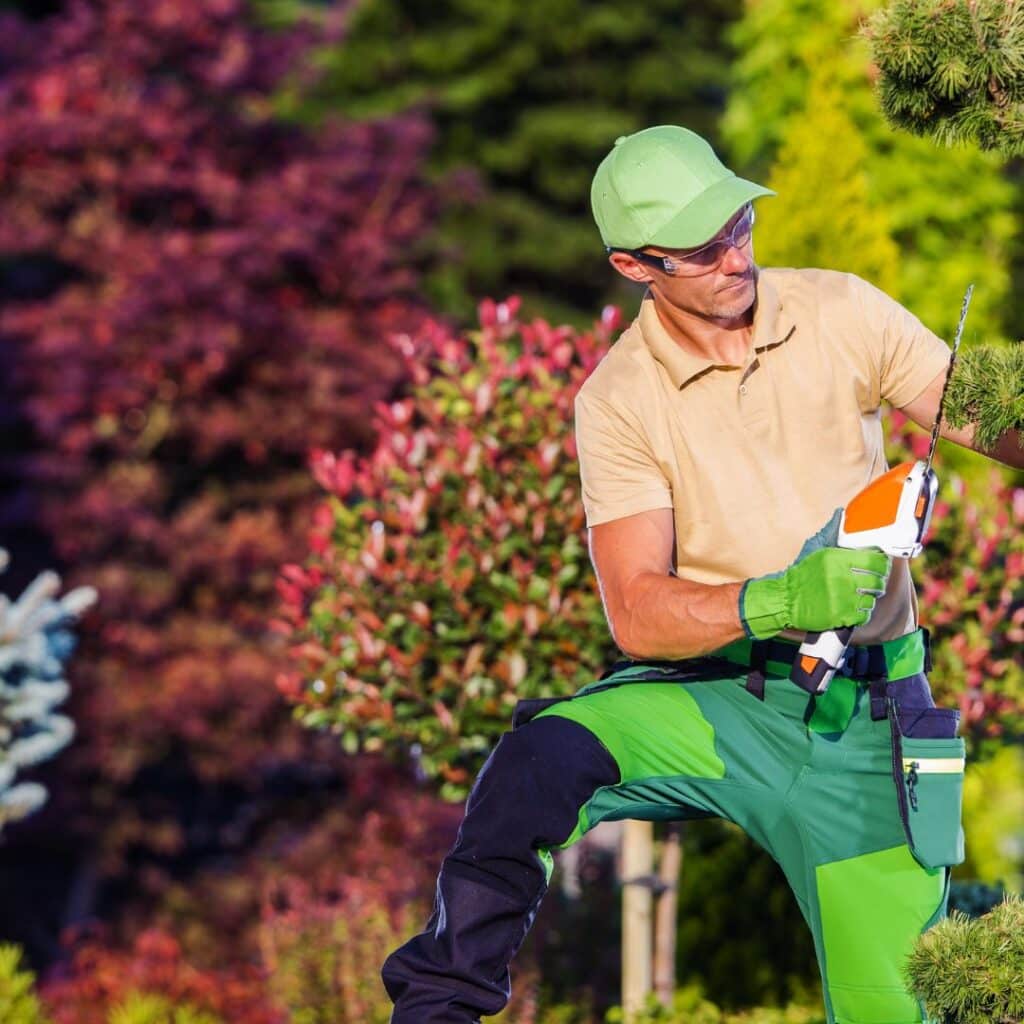
Whether you’re a seasoned gardener or a newbie looking to understand the intricacies of Photinia care, this guide aims to shed light on the dos and don’ts, ensuring your garden remains the envy of the neighborhood.
Watering
Water is the lifeblood of any plant, and Photinias are no exception. Whether it’s the Red Robin or the Carre Rouge, the trick lies in the balance. These plants prefer deep and infrequent watering. The goal is to ensure the soil remains moist, but not so wet that it feels like a soggy sponge. Overwatering can lead to root rot, while underwatering might stunt their growth. So, the next time you’re out with a watering can or hose, remember: it’s all about moderation.
Pruning
Pruning is like giving your Photinia a refreshing haircut. It not only keeps the plant looking neat but also encourages new growth. The Red Robin, being a hardy fellow, can handle a more aggressive trim. So, if you’re looking to shape it or control its size, don’t hold back too much. On the other hand, the Carre Rouge, with its more delicate demeanor, appreciates a gentler approach. A light trim, especially during its growing season, will keep it looking its best.
Fertilization
Think of fertilization as a spa day for your Photinia. A balanced fertilizer, especially during the spring, gives them the nutrients they need to stay vibrant and lush. While they aren’t overly fussy about the type of fertilizer, it’s a good idea to stick to a well-balanced one. This ensures they get a mix of all the essential nutrients, paving the way for healthier growth.
Pests and Diseases
The bane of any gardener’s existence. Both the Red Robin and Carre Rouge, in their journey, might encounter a few uninvited guests like aphids or face issues like leaf spots. The key is regular checks. Think of it as a routine health check-up. If you spot any issues, prompt treatment is crucial. Whether it’s a natural remedy or a store-bought solution, acting quickly can save you a lot of headaches down the road.
| Care Aspect |
Photinia Red Robin |
Photinia Carre Rouge |
| Watering |
Deep, infrequent watering. Moist, not soggy. |
Deep, infrequent watering. Moist, not waterlogged. |
| Pruning |
Can handle aggressive trims. |
Prefers gentle trims. |
| Fertilization |
Balanced fertilizer in spring. |
Balanced fertilizer in spring. |
| Pests & Diseases |
Watch for leaf spots & aphids. |
Regular checks for aphids & treat leaf spots. |
Conclusion: Deciding Between Carre Rouge and Red Robin for Your Garden
When it comes down to picking between Carre Rouge and Red Robin, it’s like choosing between two amazing desserts – you can’t really go wrong! If you’re someone who loves a plant that grows tall and offers a beautiful color show as its leaves change from bright red to green, then Red Robin might just be your pick. On the flip side, if you’re drawn to a plant that keeps its deep red shade consistently and doesn’t grow too tall, giving a bushy feel to your garden, then Carre Rouge is calling your name. Take a moment to picture each in your garden space, consider the look you’re going for, and trust your instincts. Both are fantastic choices, and your garden will thank you!
Frequently Asked Questions
1. What makes Photinia Red Robin stand out in a garden?
Photinia Red Robin is a showstopper with its leaves that dazzle in a bright red when young, slowly maturing to a rich green. Its tall stature and the visual treat of color-changing foliage make it a favorite among many garden enthusiasts.
2. I’ve heard a lot about Carre Rouge’s consistent color. Is it true?
Absolutely! Photinia Carre Rouge is known for its deep red leaves that stay true to their hue for a long time. If you’re someone who loves a steady splash of color in your garden without much change, Carre Rouge is your go-to.
3. Are both these plants high maintenance?
Not really! Both Red Robin and Carre Rouge are pretty adaptable. While they appreciate some love in the form of regular watering, pruning, and occasional fertilization, they’re not overly demanding. A little care goes a long way with these beauties.
4. Which one is better for smaller gardens or limited spaces?
If space is a constraint, Photinia Carre Rouge, with its compact and bushier growth, would be a more fitting choice. It allows you to have the beauty of Photinia without overwhelming a smaller garden.
5. Can I grow both Photinia Red Robin and Carre Rouge together in my garden?
Of course! Both plants can coexist beautifully in a garden, complementing each other. The transitional foliage of Red Robin paired with the consistent hue of Carre Rouge can create a captivating visual contrast.
6. Do they attract any pests or diseases I should be wary of?
Like many plants, they can occasionally be visited by pests like aphids or face issues like leaf spots. Regular checks and timely interventions can keep these concerns at bay.
7. Are they suitable for different climates?
Both Red Robin and Carre Rouge are fairly adaptable. However, it’s always a good idea to check their suitability for extreme climates. Generally, they thrive in mild to temperate zones.
There you have it—a comprehensive dive into “Photinia Red Robin VS Photinia Carre Rouge”. Regardless of your pick, your garden will thank you for it! Ready to plant? Happy gardening!
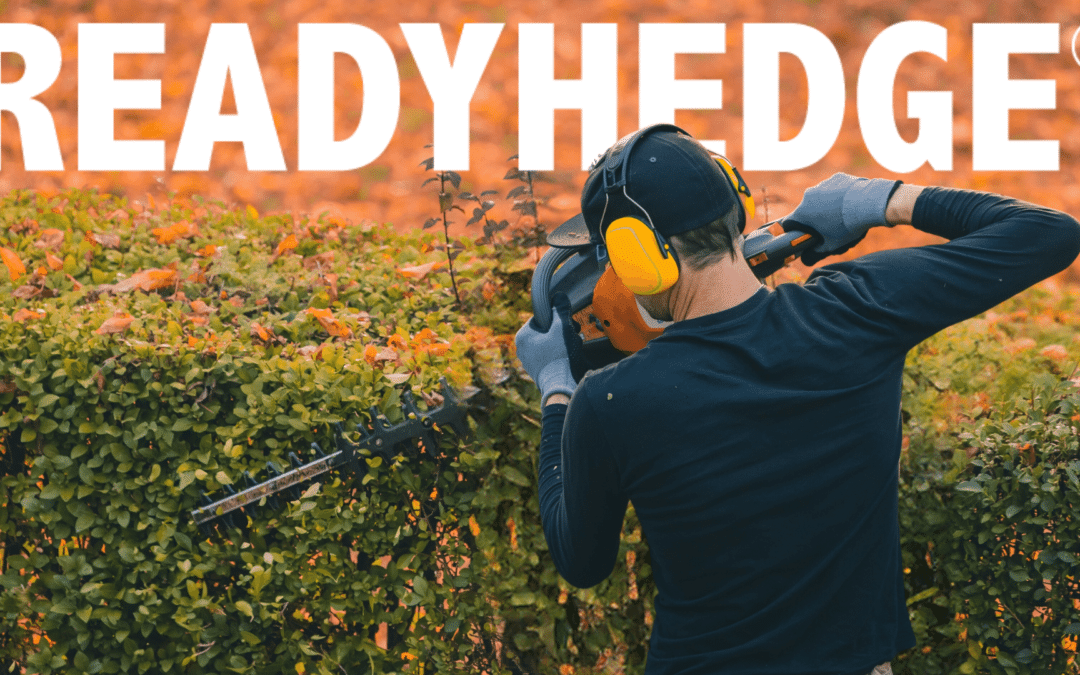
by Matthew Kemble | Oct 17, 2023 | News
As autumn rolls in with a cool breeze, Readyhedge is excited to introduce our new range of hedge lines. These have been carefully grown to add a touch of autumn’s calm beauty to your garden. As leaves change from summer green to autumn colours, our new hedge lines are here to bring this seasonal change right to your garden, offering a calm and fresh look.
Why Choose Autumn Hedges
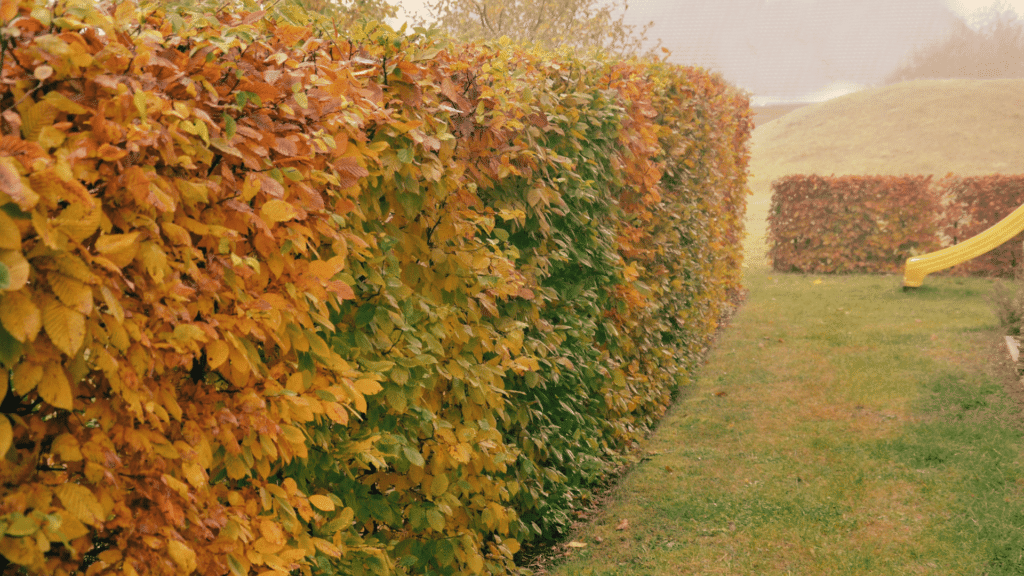
Autumn is a brilliant time of year to capitalise on some new hedging. They not only make gardens look good but also help nature thrive. Here are some great reasons to choose autumn hedges for your garden:
Beautiful Colours
Autumn brings a lovely change of colours in leaves. As it gets cooler, autumn hedges like Beech and Portuguese Laurel show off colours from golden yellows to bright reds. This natural colour change makes your garden a beautiful place to enjoy the season. The mix of autumn colours with green plants is a lovely sight.
Home for Wildlife
Autumn hedges give birds, small animals, and insects a place to live. Some hedges have berries and seeds which help feed wildlife during colder months. By having autumn hedges, your garden becomes a small wildlife-friendly place.
Privacy and Shelter
Many autumn hedges are thick and tall, making them good for privacy. They also help block cold autumn winds, making your garden a cosy place. For example, a well-kept Beech hedge can slow down the wind, keeping your outdoor space more comfortable.
Helps the Soil
Autumn hedges have strong roots that hold the soil together. This helps prevent soil from washing away in the rain, especially on slopes or in areas where water runs off easily.
Easy to Take Care Of
Once they’re growing well, autumn hedges are easy to look after. They don’t need a lot of cutting back, and they are strong against common garden problems like pests and diseases. This makes autumn hedges a good choice for both new and experienced gardeners. The Portuguese Laurel, for example, is known for being hardy and easy to care for.
A Good Investment
Choosing autumn hedges is a long-term way to make your garden and property better. Over time, well-kept hedges grow and change, showing off seasonal beauty year after year. Plus, the added privacy and beauty could increase your property’s value.
Spotlight: Portuguese Laurel
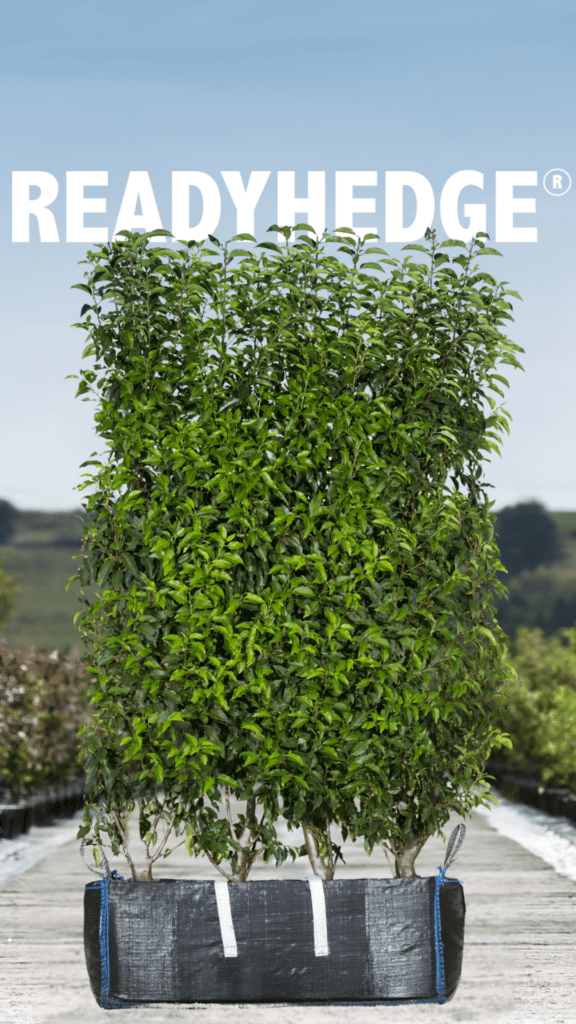
Portuguese Laurel, or Prunus lusitanica Angustifolia, is a distinguished choice for gardeners seeking to add a touch of elegance along with practical benefits to their gardens. Here’s an in-depth look into the characteristics and benefits of choosing Portuguese Laurel for your hedges:
Robust Nature
Portuguese Laurel is revered for its robust nature which makes it a resilient choice for various soil types and weather conditions. Its ability to thrive in shallow chalk soils makes it a reliable option where other hedge varieties might struggle. Moreover, its cold resistance further augments its suitability for the UK’s varied climate, making it a superior substitute for Sweet Bay (Laurus nobilis).
Ease of Maintenance
One of the notable traits of Portuguese Laurel is its low maintenance requirement. It responds well to regular trimming, which not only keeps it in shape but also promotes denser growth. This characteristic makes it a suitable choice for both novice gardeners and seasoned horticulturists looking for less maintenance-intensive hedges.
Formal and Smart Appearance
Portuguese Laurel can be trimmed to achieve a very formal and smart hedge. Its small, dark green leaves held on reddish stems that mature over time, present a polished look that never fails to impress. Whether you prefer a neat, geometric appearance or a more natural look, Portuguese Laurel is versatile enough to meet various aesthetic preferences.
Versatile Trimming Options
The flexibility in trimming allows Portuguese Laurel to be shaped into different forms. When clipped regularly, it can produce a tight, dense hedge comparable to the revered English Yew (Taxus baccata). Moreover, it can be creatively clipped into balls and lollipops, adding a whimsical or formal touch to your garden landscape.
Flowering and Fruiting
If left untrimmed, Portuguese Laurel produces white candle-like flowers in late spring, followed by small black berries, adding a seasonal charm. However, with regular trimming, flowering and fruiting can be controlled as per your preference.
An Ideal Substitute
Portuguese Laurel serves as a great alternative to other laurels, especially in cold-prone areas. It’s similar in appearance to Sweet Bay but exhibits better cold resistance, making it a more reliable choice.
Height and Structure
When allowed to grow untrimmed, Portuguese Laurel naturally forms a dense cone, reaching up to about 5 metres in height. This can provide substantial privacy and windbreak benefits while adding a structural element to the garden design.
Readyhedge Offerings
Readyhedge provides high-quality Portuguese Laurel hedges, available in Readybag or trough formats for ease of planting and instant effect. Their expertly grown Portuguese Laurel hedges are a testament to over 20 years of horticultural excellence, ensuring you receive a top-tier product that will thrive in your garden for years to come.
The Portuguese Laurel from Readyhedge is competitively priced at £220.00 per metre ex. VAT for a Readybag, ensuring you get the best value for your investment. For more details or to make a purchase, you can reach out to Readyhedge at 01386 750 585 or visit their nursery at Court Gate Nursery, Eckington, WR10 3BB.
Spotlight: Green Beech
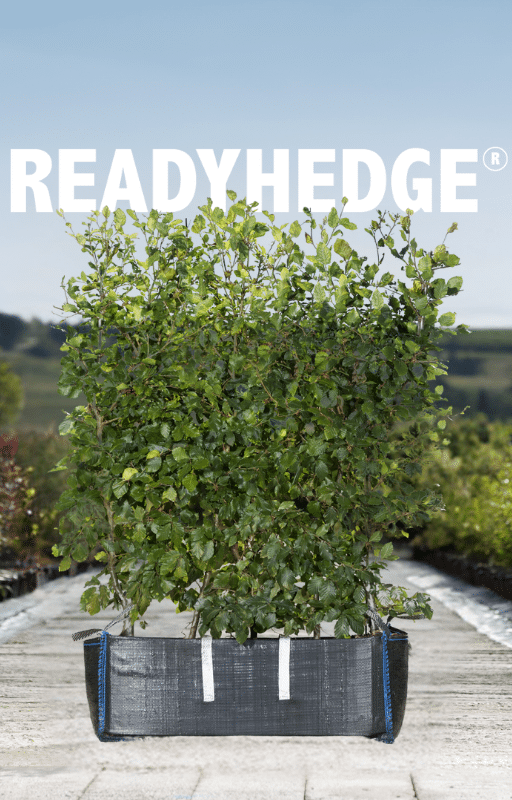
Fagus sylvatica, commonly known as Green Beech, is a timeless choice for hedging, promising a vibrant display of changing hues all year round. Here’s an exploration of the myriad benefits and characteristics of Green Beech, making it a standout choice for your garden or landscape project:
Seasonal Beauty
Green Beech is celebrated for its seasonal transitions. In spring, it unveils fresh green leaves which transition into a rich coppery shade during autumn and winter. This constant change adds a dynamic visual interest to any planting scheme or boundary, making every season a picturesque scene in your garden.
Historical Significance
The use of Green Beech for hedging is steeped in history, finding its place in many formal gardens and landscapes over centuries. Its classic appeal has been cherished in the UK, epitomized by the Meikleour Beech Hedge in Scotland, the tallest beech hedge on earth according to Guinness World Records, standing at 30 metres tall and 530 metres long since 1745.
Award-Winning Plant
The Royal Horticultural Society bestowed an Award of Garden Merit upon Green Beech in 1984, further underlining its outstanding qualities as a hedging plant.
Impressive and Compact Hedge
With regular clipping, Green Beech forms a compact and impressive hedge, adaptable to various heights starting as low as 4 feet. Its flexibility in height and form caters to different aesthetic and functional needs, making it a versatile choice for different garden styles and purposes.
Unique Leaf Retention
Unlike many deciduous trees, Green Beech retains its burnished copper leaves during winter, providing a semblance of privacy and a visual barrier even in colder months. This unique leaf retention keeps your hedge looking full and vibrant year-round.
Soil Adaptability
Green Beech is adaptable to a wide range of soil types except for heavy clay and very wet soils. It has a particular affinity for chalky soils and shallow soils over limestone, making it a robust choice for diverse garden settings.
Readyhedge Offerings
Readyhedge provides meticulously grown Green Beech hedges, available in Readybag for £190.00 ex. VAT. This option ensures ease of planting and an instant visual impact. Their Green Beech hedges are nurtured to thrive and adapt to various garden conditions, ensuring a long-term, quality investment for your landscape.
Readyhedge’s dedicated team is available for consultations and purchases at 01386 750 585 or Court Gate Nursery, Eckington, WR10 3BB. Explore their offerings to find the perfect Green Beech hedge that aligns with your gardening aspirations.
The Readyhedge Quality Assurance: Nurturing Excellence in Every Leaf

At Readyhedge, our legacy is deeply rooted in the unwavering commitment to delivering horticultural excellence embodied in our vast collection of superior-quality hedges. Our journey, driven by a profound passion for horticulture, has sculpted us into esteemed growers and suppliers of instant hedging and screening solutions that stand as a hallmark of quality and aesthetic charm.
Nestled in the serene landscapes of Worcestershire, our nursery is a sanctuary where the science and art of horticulture converge, fostering the growth of over 35 diverse varieties of hedges. Annually, our cultivated landscapes yield over 40km of robust, vibrant hedges, each meticulously nurtured to meet the discerning standards of both domestic and commercial landscapes.
A Symphony of Variety: Discover Readyhedge’s Extensive Collection
At the heart of Readyhedge’s offerings is a rich tapestry of hedge varieties, each bearing unique attributes poised to cater to the varied aesthetic and functional preferences of our clientele. Our speciality lies in cultivating instant hedging available in Readyhedge bags or troughs, offering a spectrum of heights ranging from a modest 30cm to an imposing 200cm. The breadth of our collection is a testament to our expertise, ensuring every garden finds its perfect companion in a Readyhedge.
Our meticulous cultivation process is tailored to meet the unique needs of each hedge variety, ensuring they thrive and mature into resilient, eye-catching horticultural marvels. Whether you are in pursuit of low or high panels, individual plants, or screens, our nursery is a treasure trove waiting to be explored.
The Readyhedge Customer-Centric Approach: Where Quality Meets Convenience
Our ethos transcends the boundaries of mere commerce, embodying a holistic approach that prioritizes the satisfaction and convenience of our customers. We take immense pride in ensuring a seamless acquisition experience, offering expedited delivery services that span across England, Wales, and Scotland. Our hedges, securely nestled in their one-metre trough or bag, arrive at your doorstep ready to grace your garden with their natural elegance.
Moreover, our dedicated customer service team is always on standby, ready to assist you in your quest for the perfect hedge. Your inquiries and purchases are handled with utmost professionalism, ensuring your Readyhedge experience is as enriching as the horticultural treasures we offer.
Bridging Gardens with Horticultural Mastery
Our endeavours have not only garnered us a loyal clientele but also caught the eye of prestigious platforms, earning us a feature on ITV’s ‘Love Your Weekend’ with Alan Titchmarsh. This accolade is a heartwarming affirmation of our dedication to promoting horticultural excellence.
Embark on a horticultural voyage through Readyhedge’s extensive hedge collection, each hedge a narrative of our expertise, commitment, and the boundless beauty of nature. As you explore, you’ll uncover not just a hedge, but a lifetime companion for your garden, promising seasons of visual delight and ecological balance.
Conclusion
Autumn is a special time at Readyhedge. We are introducing new hedge varieties like the Portuguese Laurel and Green Beech to help make your garden a peaceful and beautiful place. Our wide range of hedges is carefully chosen to suit different gardens and tastes.
Our new autumn hedges are easy to care for and add beauty to your garden through the changing seasons. Each hedge plant from Readyhedge is a quality plant that will grow well, look great, and help create a natural outdoor space for you to enjoy.
Get in Touch to Learn More
We’re here to help you find the perfect hedge for your garden. Contact us to learn more about our new autumn hedges and other plants. Our team at Readyhedge is always ready to answer your questions and help you choose the right hedges for your garden.
- Phone: Call us at 01386 750 585 for help and advice.
- Visit: Come see us at Court Gate Nursery, Eckington, WR10 3BB to explore our hedges in person.
- Email: You can email us at [email protected] for more information.
Readyhedge is your go-to place for quality hedges. Whether you’re new to gardening or have a green thumb, we’re here to help make your garden a place you love.



















